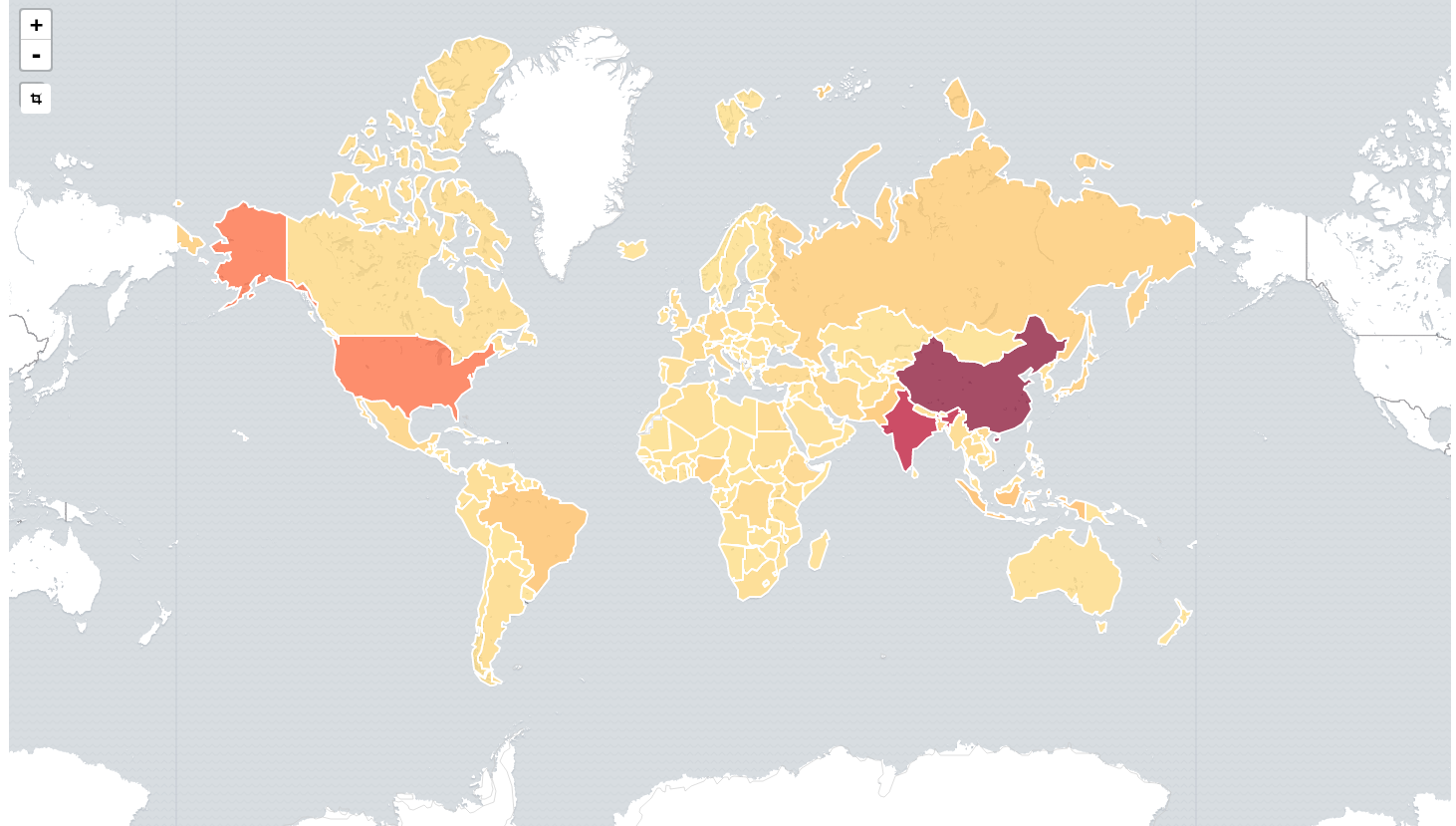IMPORTANT: No additional bug fixes or documentation updates
will be released for this version. For the latest information, see the
current release documentation.
Region Maps
editRegion Maps
editRegion maps are thematic maps in which boundary vector shapes are colored using a gradient: higher intensity colors indicate larger values, and lower intensity colors indicate smaller values. These are also known as choropleth maps.

Configuration
editTo create a region map, you configure an inner join that joins the result of an Elasticsearch terms aggregation and a reference vector file based on a shared key.
Data
editMetrics
editSelect any of the supported Metric or Sibling Pipeline Aggregations.
Buckets
editConfigure a Terms aggregation. The term is the key that is used to join the results to the vector data on the map.
Options
editLayer Settings
edit- Vector map: select from a list of vector maps. This list includes the maps that are hosted by the © Elastic Maps Service, as well as your self-hosted layers that are configured in the config/kibana.yml file. To learn more about how to configure Kibana to make self-hosted layers available, see the regionmap settings documentation. You can also explore and preview vector layers available in Elastic Maps Service at https://maps.elastic.co.
-
Join field: this is the property from the selected vector map that will be used to join on the terms in your terms-aggregation.
When terms cannot be joined to any of the shapes in the vector layer because there is no exact match in the vector layer, Kibana will display a warning.
To turn of these warnings, go to Management/Kibana/Advanced Settings and set
visualization:regionmap:showWarningstofalse.
Style Settings
edit- Color Schema: the color range used to color the shapes.
Basic Settings
edit- Legend Position: the location on the screen where the legend should be rendered.
- Show Tooltip: indicates whether a tooltip should be displayed when hovering over a shape..